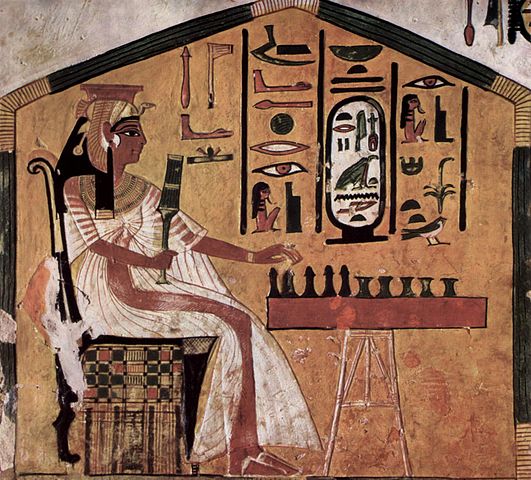
When did people start playing board games? The first board games were played in Egypt roughly 5,500 years ago.
We have probably all played board games at some time in our lives. Christmas isn’t really Christmas without a game of Pictionary or Monopoly. Incidentally, Monopoly is considered the best-selling board game of all time, but that is debatable. The Monopoly we play is attributed to Charles Darrow who started to sell it in the 1930s. However, there were several other similar games that existed at the time and Darrow seems to have taken elements from various games and combined them into his. Still, the design of the game we play today is his, if not necessarily all of the rules and the ideas. Monopoly is often said to be the most popular board game because it is possible to know roughly how many games have been sold. It is about 300 million. However, the most popular board game of all time is probably chess. Millions of boards are sold every year. The only problem with chess is it was invented in roughly the 6th century in India and there is obviously no patent, so nobody can keep track of how many boards have been sold. It is estimated to be in the billions.
The oldest board game that archaeologists have discovered was made in Egypt 5,500 years ago. There are two games that come from this period in Ancient Egypt. They appeared during the Old Kingdom. One of them was called Mehen and it is mostly found in pictures. Some physical boards have been found, but the game seems to have disappeared by the time of the Middle Kingdom. The game has the same name as the god Mehen, the snake god, and the board features a coiled snake, so there was probably a religious connection between the two. The game has been found in tombs, so it was probably something to do with the snake god’s religion. The rules of the game have never been recorded, but the fact that it was based on the god Mehen and that some of the pieces have been found imply that the idea was to move the pieces, which represented the soul, along the snake so that the first person there, the winner, could be reborn. The problem with mehen is that two types of counters have been found. One type are basic counters that fit in the spaces on the snake, but the second type are much larger counters in the shape of lions, or large cats, and they are too big to fit in the spaces on the snake. Nobody knows what these pieces were for.
A second game that appeared in Ancient Egypt at around about the same time was senet, which was also used in burials and might also have had a religious purpose. The board had 30 squares in three rows of ten and each player had five pieces that were shaped like dogs. In Egyptian mythology, the dog was Anubis, the god of funerary rites and the guide to the underworld. The rules to senet have been lost, but it is probably similar to mehen, in that the soul had to pass across the board and the squares probably represented different stages of life. Wealthy people, such as the Pharaoh Tutankhamun, played senet with ornately engraved boards, while the regular people played on grids scratched into the floor.
At the time, there were no dice. There were a few ways that players could have chosen the number of spaces they moved. They could use something called casting sticks. There were four sticks that were colored on one side and not on the other. All four sticks were dropped and the number of sticks that landed color side up were the number of spaces you could move. If all the sticks landed color side down, you could move six spaces. There were also throwing bones, which were a similar system. The first dice was invented in about 2800 BC in what is now Iran. The first dice that had opposite sides that added up to seven was invented in the Indus Valley in 2500 BC.
The oldest game that still exists is a version of checkers that was first played in Egypt in about 1400 BC. Each player had nine counters that they had to get across the board while trying to take all of their opponent’s pieces. Versions of this game have been found in multiple countries around the world. There may be some connection between them, but it is more likely that it is a simple game that was invented in many different countries independently. And this is what I learned today.
Try these:
Sources
https://www.smithsonianmag.com/science-nature/best-board-games-ancient-world-180974094
https://en.wikipedia.org/wiki/Senet
https://wellplayedasheville.com/blog/board-games-a-brief-history
https://en.wikipedia.org/wiki/Mehen_(game)
https://en.wikipedia.org/wiki/Board_game
https://www.britishmuseum.org/blog/top-10-historical-board-games
https://www.english-heritage.org.uk/learn/histories/board-games
https://en.wikipedia.org/wiki/Monopoly_(game)
https://www.awesomedice.com/blogs/news/history-of-dice
https://nabataea.net/explore/petra/petra-rules-for-ancient-games
By Maler der Grabkammer der Nefertari – The Yorck Project (2002) 10.000 Meisterwerke der Malerei (DVD-ROM), distributed by DIRECTMEDIA Publishing GmbH. ISBN: 3936122202., Public Domain, https://commons.wikimedia.org/w/index.php?curid=154294
